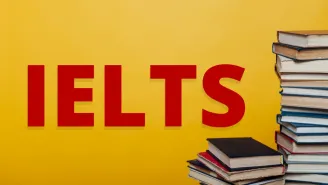The History Of Glass Reading Passage
The History Of Glass Reading Passage
A. Glass has been used by man from his earliest origins. Historians found that obsidian, a type of natural glass, has formed in places, like in the mouth of a volcano, as a consequence of the intense heat of an eruption melting island, which was used as tips for spears. In 4000 BC, archaeologists discovered evidence of man-made glass, which took the shape of glazes used for covering stone beads. With the covering of the sand core and the layer of molten glass, the first hollow glass container was made.
B. From the 1st century BC, the most common method to make glass containers is by doing glass blowing. As the raw materials contain impurities, the glass that was made at that time is highly coloured. Methods to create colourless glass were developed during the first century AD, and it was then tinted by adding the colouring materials. Romans are the ones who took the secret of glass making across Europe, during this century. But, they protected the glass making skills and technology, still it spread throughout Europe and the Middle East after their empire was ruined in 476 AD. From the 10th Century, the Venetians earned reputation on making the glass bottles with technical skill and artistic ability and most of the craftsmen in the italy’s cities set up the glassworks throughout Europe.
C. When the English Manufacturer George Ravenscroft (1632 – 1683) invented the lead crystal glass, it became a major mark in the history of glass. He added the lead in the raw materials during the process of glass-making to counter the clouding effect that occurs in blown glass. The new glass he introduced has the following qualities: softer, easier to decorate, higher refractive index, has the brilliance and beauty and it has become an important glass to the optical industry. Optical lenses, astronomical telescopes, microscopes have become possible only because of the invention of Ravenscroft.
D. In Britain, after rescinding the Excise Act in 1845, the modern glass industry began to boom. Heavy taxes were placed on the amount of glass melted in glasshouses, before that time and increased continuously from 1745 to 1845. In 1851, at the London’s Great Exhibition, Joseph Paxton’s Crystal Palace marked the beginning of glass as a material used in the building industry. This path-breaking new building has increased the usage of glass in public, domestic and horticultural architecture. As science and technology began to advance and develop, glass manufacturing techniques also improved.
E. From the year of 1887, when HM Ashley introduced a machine in Castleford, Yorkshire, England, which is capable of producing 200 bottles per hour. It is produced more than three times faster than any previous production methods. In 1907, Michael Owens, who is the founder of the Owens Bottle Company, developed the first fully automated machine in the USA and installed it in its factory. Owen’s invention can produce 2,500 bottles per hour. Rapid development occurred, but during the First World War, Britain cut off from the essential glass suppliers, and glass became part of the scientific sector. Before this, glass had been seen as a craft instead of precise science.
F. Currently, Glass making is a big business. It has become a modern, hi-tech industry functioning in an intensely competitive market where quality, design and service levels are important to maintaining market share. Modern glass plants have the capacity to make millions of glass containers per day in a variety of colours, green and brown remaining the most popular. Glass has become inseparable from modern life. You can see it in almost every aspect of our lives – our homes, our cars. Many products have glass packaging, and most of the beverages sold in glass, as are many foodstuffs, medicines and cosmetics.
G. Glass is the perfect material for recycling and concern for green issues, glass bottles and jars are becoming more popular as with growing consumers. Glass recycling is a good thing for the environment. It saves used glass containers rather than disposing it into landfill. Both fuel and production expenses can be saved because recycled glass needs less energy to melt than raw materials. The need for quarrying materials minimised by the recycling and preserves the valuable resources.
The History Of Glass Reading Question & Answers
Have you read the passage? Now, take the test and find The History Of Glass Reading answers!
Try to answer these questions by yourself before you sneak a peek at the answers given below.
Good luck!






